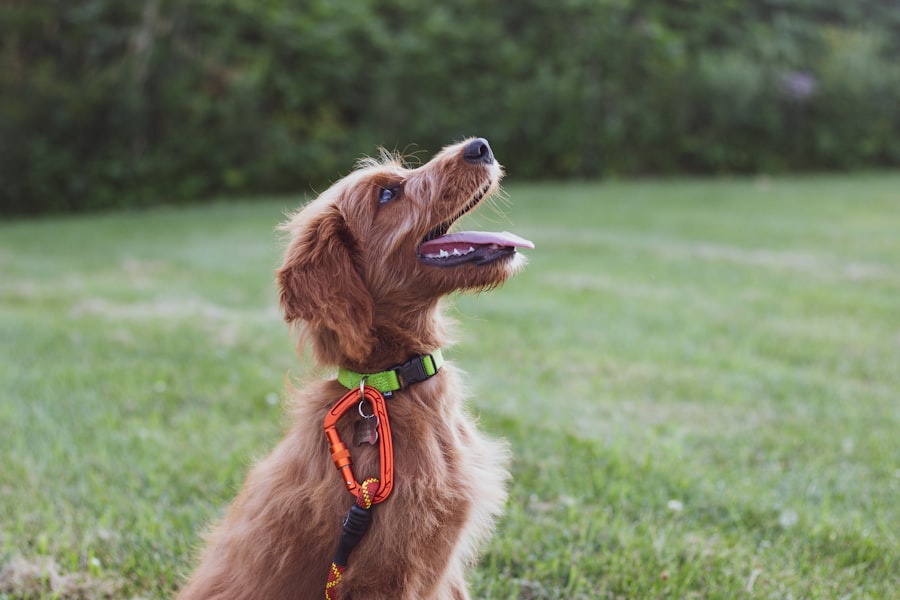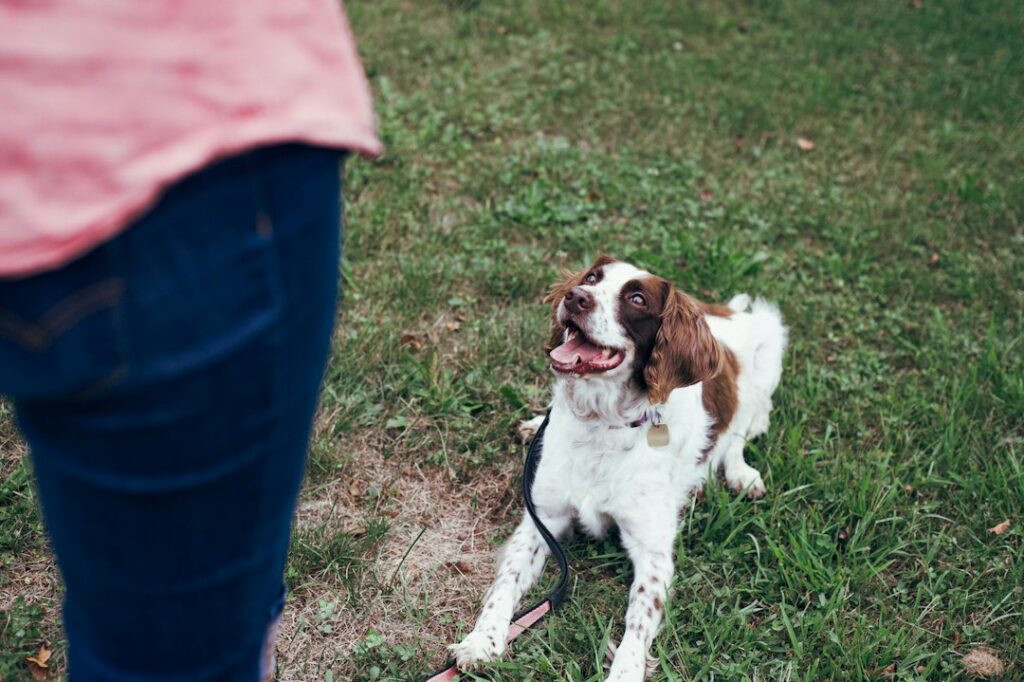Owning a puppy can be an incredibly rewarding experience, but it also requires a lot of time and effort. Puppy training is essential for creating a well-behaved and happy dog. As a busy owner, it can be challenging to find the time to train your puppy, but it’s worth it in the long run. Training your puppy not only helps them learn basic commands and manners, but it also strengthens the bond between you and your furry friend.
Contents
- 1 Puppy Training Schedule: A Structured Approach to Training
- 2 Easy Dog Training: Simple Techniques for Busy Owners
- 3 Quick Training Methods: Efficient Ways to Teach Your Puppy
- 4 Obedience Training at Home: Tips for Successful Training
- 5 Training Puppies with Limited Time: Making the Most of Short Sessions
- 6 Basic Commands: Teaching Your Puppy Sit, Stay, and Come
- 7 Leash Training: Essential for Safe Walks with Your Puppy
- 8 Crate Training: Creating a Safe and Comfortable Space for Your Puppy
- 9 Positive Reinforcement: Using Rewards to Encourage Good Behavior in Your Puppy
Puppy Training Schedule: A Structured Approach to Training
Creating a schedule for your puppy’s training can help you stay organized and consistent. A structured approach to training can also help your puppy learn faster and retain information better. Consider setting aside specific times each day for training sessions. This will not only help you stay on track but will also provide your puppy with a routine that they can rely on.
Easy Dog Training: Simple Techniques for Busy Owners
There are many simple techniques that busy owners can use to train their puppies. One effective technique is positive reinforcement. This involves rewarding your puppy with treats, praise, or playtime when they exhibit the desired behavior. Another technique is breaking down training into small steps. Instead of trying to teach your puppy everything at once, focus on one command or behavior at a time. Being consistent with commands is also important. Use the same word or gesture each time you want your puppy to perform a specific action.
Quick Training Methods: Efficient Ways to Teach Your Puppy
Busy owners may not have a lot of time for training sessions, but there are still efficient ways to teach your puppy. One method is clicker training. This involves using a clicker to mark the desired behavior and then rewarding your puppy with a treat. Clicker training is effective because it provides immediate feedback to your puppy and helps them understand which behaviors are being rewarded. Another method is incorporating training into daily activities. For example, you can practice sit and stay commands while preparing your puppy’s meals or ask them to come to you when it’s time for a walk. Focusing on one command at a time is also important. Trying to teach your puppy multiple commands at once can be overwhelming for both of you.
Obedience Training at Home: Tips for Successful Training
Obedience training is an important part of puppy training, but it can be challenging to do at home. One tip for successful obedience training at home is to use positive reinforcement. Reward your puppy with treats, praise, or playtime when they exhibit the desired behavior. This will help them associate the behavior with something positive and increase the likelihood of them repeating it in the future. Being consistent with commands is also crucial. Use the same word or gesture each time you want your puppy to perform a specific action. This will help them understand what is expected of them and reduce confusion. Starting with basic commands is also important. Teach your puppy simple commands like sit, stay, and come before moving on to more advanced ones.
Training Puppies with Limited Time: Making the Most of Short Sessions

Even if you only have a few minutes a day to train your puppy, you can still make progress. Making the most of short training sessions involves being focused and using positive reinforcement. Set aside a specific time each day for training and eliminate any distractions that may interfere with your session. Use treats, praise, or playtime to reward your puppy when they exhibit the desired behavior. Breaking down training into small steps is also important. Instead of trying to teach your puppy everything at once, focus on one command or behavior at a time.
Basic Commands: Teaching Your Puppy Sit, Stay, and Come
Basic commands like sit, stay, and come are essential for a well-behaved puppy. Teaching these commands involves using positive reinforcement, being consistent with commands, and breaking down training into small steps. To teach your puppy to sit, hold a treat above their head and slowly move it back towards their tail. As their head follows the treat, their bottom will naturally lower into a sitting position. Once they are sitting, give them the treat and praise them. Repeat this process several times until your puppy understands the command. To teach your puppy to stay, start by having them sit. Hold your hand up in front of their face and say “stay.” Take a step back and wait a few seconds before returning to your puppy and rewarding them with a treat and praise. Gradually increase the distance and duration of the stay command as your puppy becomes more comfortable. To teach your puppy to come, start by kneeling down and calling their name in an excited tone. When they come to you, reward them with a treat and praise. Repeat this process several times until your puppy understands the command.
Leash Training: Essential for Safe Walks with Your Puppy
Leash training is an important part of puppy training, as it ensures safe walks with your puppy. Tips for successful leash training include using positive reinforcement, starting with short walks, and being patient. Begin by attaching the leash to your puppy’s collar or harness and let them get used to the feeling of it being attached. Reward them with treats and praise for wearing the leash without pulling or resisting. Once they are comfortable with the leash, take them on short walks around your yard or neighborhood. Reward them for walking calmly beside you and not pulling on the leash. Gradually increase the length of the walks as your puppy becomes more comfortable.
Crate Training: Creating a Safe and Comfortable Space for Your Puppy
Crate training is an effective way to create a safe and comfortable space for your puppy. Tips for successful crate training include making the crate comfortable, using positive reinforcement, and starting with short periods of time in the crate. Start by placing a soft blanket or bed inside the crate to make it cozy. Leave the door open and encourage your puppy to explore the crate on their own. Once they are comfortable going in and out of the crate, start feeding them their meals inside. This will help them associate the crate with something positive. Gradually increase the amount of time your puppy spends in the crate, starting with just a few minutes and gradually working up to longer periods. Always reward your puppy with treats and praise when they enter the crate willingly.
Positive Reinforcement: Using Rewards to Encourage Good Behavior in Your Puppy
Positive reinforcement is a powerful tool for encouraging good behavior in your puppy. Using rewards like treats, praise, and playtime can help your puppy learn faster and retain information better. When your puppy exhibits the desired behavior, immediately reward them with a treat and praise. This will help them understand that they are doing something right and increase the likelihood of them repeating the behavior in the future. It’s important to be consistent with rewards and only give them when your puppy has performed the desired behavior. This will help your puppy understand which behaviors are being rewarded and which ones are not. Remember to keep training sessions short and fun, as puppies have short attention spans and can easily become bored or distracted.
If you’re a busy owner trying to teach your puppy essential commands, you may also be interested in learning about 8 Tips to Housebreaking Your Pet. Housebreaking is an important aspect of puppy training, and this article provides practical advice and strategies to help you successfully potty train your furry friend. Check it out here.


